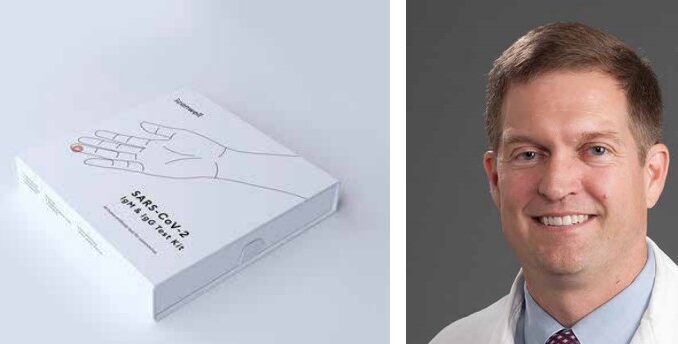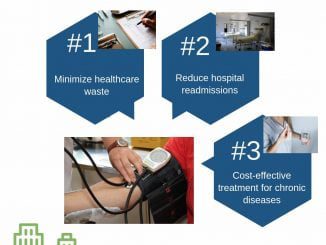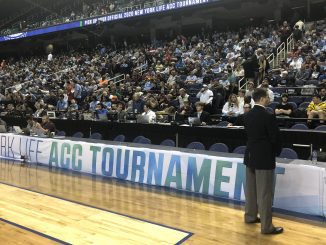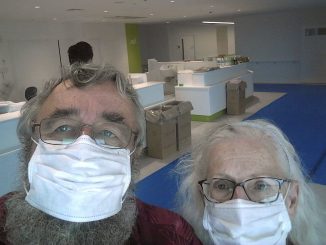
RALEIGH — In mid-April of 2020, an antibody study, to be conducted by Wake Forest Baptist Health and Atrium Health, was given $100,000. Almost a year later, the study had enrolled over 23,000 individuals to log daily symptoms, and nearly 11,000 of those enrolled have taken at least one antibody test. The antibody portion of the study concluded at the end of October.
Dr. John Sanders, chief of infectious diseases at Wake Forest Baptist Health, who led the study, tells North State Journal they ended up doing 222,968 antibody tests over the course of the study.
There are 29 different research papers related to the study which have either already gone through the process and are ready for publication, have already been published, or are still being worked on.
Sanders said that as of mid-to-late December 2020, of the 20,000 plus people in North Carolina who were being regularly tested, about 30% had had antibodies at some point before the vaccines became available.
“Well, the thing about antibody tests are that natural infection will trigger a positive test and vaccines will trigger a positive test,” said Sanders. “So, one of the things that we could show after the vaccines came out was that the vast majority of people who got vaccinated had a positive antibody test and there’s over 95% of people, of all ages, who got a vaccine demonstrated positive antibody within six weeks of having gotten vaccinated.”
Sanders, a graduate of Tulane University’s School of Medicine who earned his undergraduate degree from N.C. State, noted that there were 65,000 people who volunteered for the study across 10 sites in multiple states. Six of those sites are in North Carolina. He also said that they ended up with close to 50,000 who persisted in the study.
“Over 40,000 of them were getting antibody tests,” said Sanders of the study participants. “Of that 30,000 of those were in North Carolina. So, we do feel very good about the data up until the vaccines came out.”
North Carolina sites included Wake Forest, Atrium, WakeMed in Raleigh, Vidant in Greenville, New Hanover, Wilmington and Campbell University. Other sites include Delaware, University of Mississippi, Tulane University, University of Maryland and MedStar, which is in Georgetown in Washington, D.C.
Sanders said one thing the study was able to show is that in North Carolina, before the vaccine came out, about a third of the population had been infected and about two-thirds of those who were infected had mild to no symptoms.
“We were able to look at their daily symptom reporting, their self-reporting of comorbidities, their electronic health record of comorbidities, their exposures, and look at real world effectiveness and show that in North Carolina, out of 32 weeks after two weeks out of [getting] either of the two mRNA vaccines is the study that we that we reported on, we had 91% real world effectiveness for preventing disease,” said Sanders, adding that result “is very consistent with the clinical trials, very consistent with what’s been reported.”
Sanders later said that 18 months in, over 50% of our volunteers were still participating.
“So, we are still looking at about 30,000 people [who] are still doing daily symptom and exposure check-ins more than five times a week,” said Sanders. “And really remarkable dedication by our volunteers to be doing that.”
Doug McGlasson, a clinical research manager with Wake Forest Baptist Health involved with the study, said that they have been getting in excess of 10 billion daily responses since the study started.
McGlasson also said that there are over 2,000 pediatric-aged individuals participating in daily syndromic reporting. Of those, 1,900 are part of serology and virology studies, both of which will have concluded at the end of November.
“We are collecting data out of the Atrium-Charlotte area, the Winston-Salem area, and the WakeMed Raleigh-Durham area,” McGlasson said. “Out of those pediatric participants ages 2 through 18, but that’s a whole other set of interesting data that we’re just now starting to take a look at to interpret what are we finding.”
There have been increasing reports of fully vaccinated individuals experiencing breakthrough cases. Sanders said their study also found breakthrough cases and found younger cohorts seemed to be more at risk.
Sander said their most unique finding contradicts most studies which have found that the older one is, the more likely they are to have a breakthrough infection.
“We actually found it was the other way around,” said Sanders. “That’s an exposure issue, we think, not a not an immunologic issue.”
Speaking about a related paper currently in review with a medical journal, Sanders said they were able to show that, “the risk for breakthrough in North Carolina was inverse to age, meaning that the 18- to 40-year-olds were more likely to have a breakthrough infection than the 40- to 65-year-olds and those 65 and older.”
“Now biologically, we know that they’re not at more risk in terms of their immune response. So, this really reflects their exposures,” said Sanders. “They are young people. They’re more likely to have unvaccinated kids. They are more likely to be going out and doing things.”
He also said that people in rural counties were more likely to have a breakthrough infection even if they were vaccinated. Sanders added those breakthrough infections were mild and moderate.
Look for additional installments of North State Journal’s interview with Dr. Sanders in the coming weeks.



